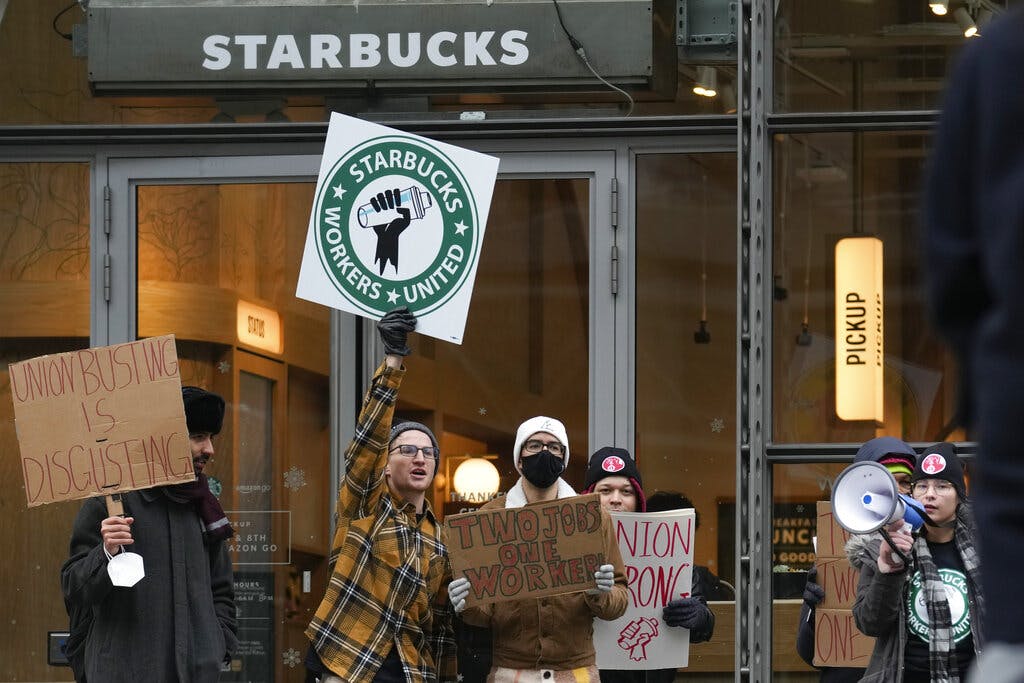Constitutional Joe
In the Starbucks labor dispute the Supreme Court brews a rich cup of constitutional logic.

At a time of rising union activism, today’s Supreme Court’s ruling for Starbucks promises to help ensure the neutrality of the federal government in labor disputes. The opinion dials back the regulatory aims of the National Labor Relations Board, which has been intervening when employees seek to form unions. The NLRB in effect wanted courts to take its word when it claims an “unfair labor practice.” Not so fast, said the Nine — unanimously.
The dispute emerged following a unionization drive by some Starbucks employees at Memphis. The employees got fired, though, for breaking company rules. Their violations included inviting a television news crew into the store after hours to help publicize the union push. The NLRB was quick to intrude in the dispute, arguing that Starbucks had been “unfair” in its treatment of the baristas. Who gets to decide that, though?
The NLRB’s view is that its appraisal should stand as a matter of law, and it demanded a federal judge step in and get the employees back on the payroll. This question became the crux of the case. What standard did the federal district judge need to use when considering the NLRB’s demand? The G-men wanted judges to set a low bar. As long as there was “reasonable cause” — a lenient legal standard — the judge would be bound to agree.
That standard, though, turns judges into little more than rubber stamps for the NLRB. The New Civil Liberties Alliance warned that this “easy access” to judicial intervention “allows the agency to deprive a party of property rights without the due process of law.” Starbucks argued that judges should follow a more rigorous process, including a determination that the NLRB was likely to prevail in its case against an employer before intervening in a dispute.
In the court’s opinion vindicating Starbucks, Justice Clarence Thomas zeroed in on this point, noting the “obvious difference” between the two standards. “It is hard to imagine,” he wrote, how the NLRB “could lose under the reasonable-cause test” favored by the agency. That argument would force judges to accept “a minimally plausible legal theory,” he added, “while ignoring conflicting law or facts.”
The dispute now returns to a lower court in a win for Starbucks, which, Justice Thomas notes, is “the world’s largest coffeehouse chain, with over 34,000 locations.” The outcome offers potential respite, too, for myriad small businesses who don’t necessarily have the deep pockets to challenge in court an adverse ruling from the NLRB. As these columns asked, what gives the federal government the idea it can intrude in the employment decisions of such firms?
It wasn’t until the New Deal, after all, that Uncle Sam started looking over the shoulder of employers to make sure they were subscribing to a federal definition of “fair labor practices.” The National Labor Relations Act of 1935 is the law that tilted the playing field, favoring employees over businesses. The law followed the Supreme Court’s voiding of the law that created FDR’s Soviet-style National Recovery Administration.
The NRA was an attempt to regulate just about every economic activity under the sun, including hiring and wages. It was struck down in another unanimous ruling, the Schechter Brothers poultry case, which decried the law as “an unconstitutional delegation of legislative power.” Chief Justice Hughes’s opinion lamented that letting the NRA stand would mean “no limit to the federal power” and condemned the idea of “a completely centralized government.”
If not as oppressive as the NRA, the NLRB still interferes more in America’s business life than it has any right to do. The Nine’s ruling today marks a welcome rebuke, especially when President Biden is trying to encourage more unionization drives. During oral arguments, Justice Amy Coney Barrett stressed that courts were “an independent check” on federal agencies. In today’s ruling, the justices served up a heady brew of Constitutional logic.

